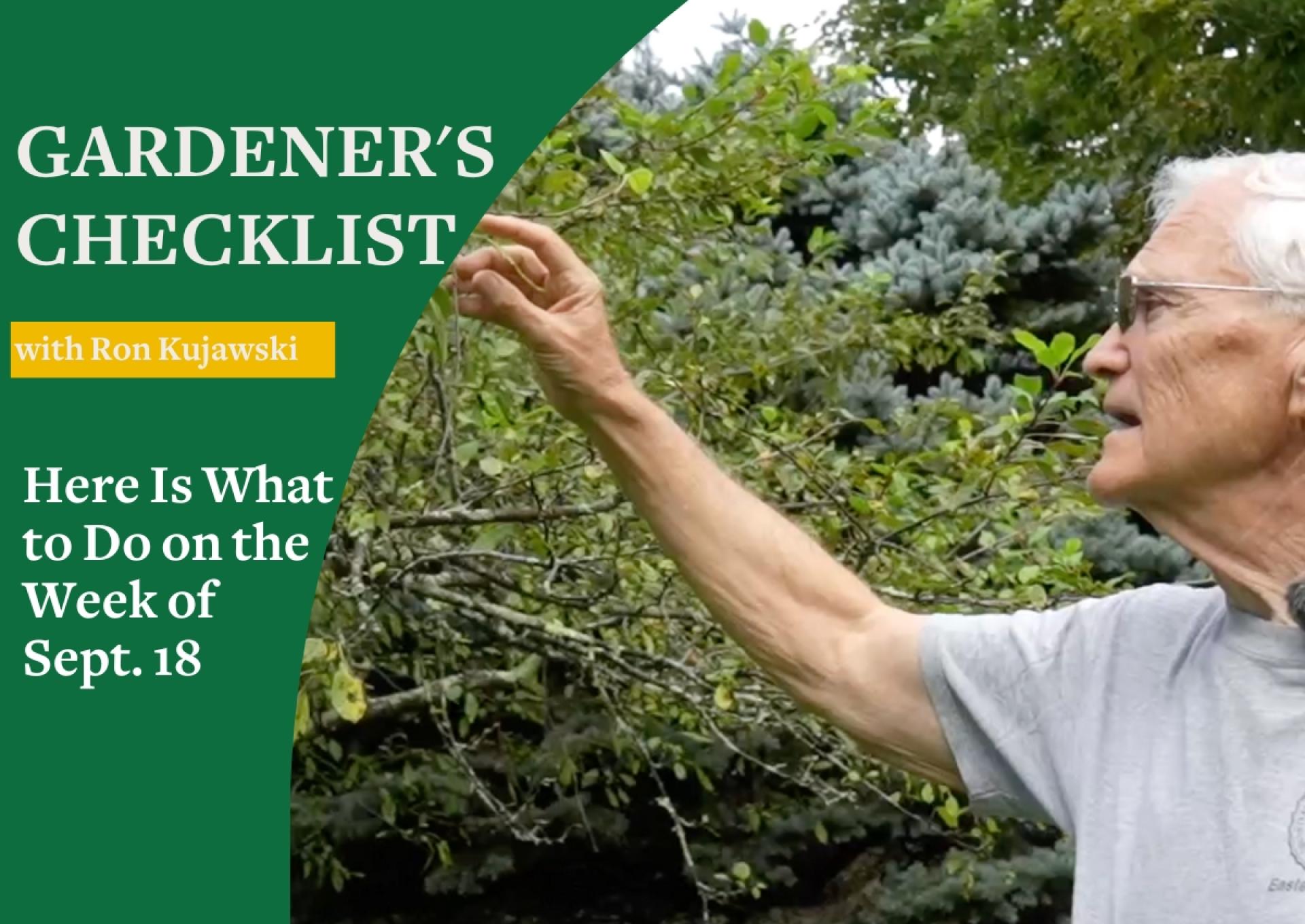You are here
Gardeners Checklist: Here is What to Do on the Week of Sept. 18
Gardeners Checklist: Here is What to Do on the Week of Sept. 18
By Ron Kujawski
• Pinch out the tip of Brussels sprouts to speed up development of the sprouts. The sprouts should be harvested when they are firm, not loose, and at least one inch in diameter. Their flavor is much improved after plants have been exposed to a light frost.
• Wash gourds in warm soapy water and then rinse is clear water. Cure the cleaned-up gourds by spreading them on several layers of newspaper in a warm airy spot for several weeks. Turn the gourds every few days for uniform curing. Pumpkins and winter squash can be treated in the same way.
• Consider planting trees, shrubs, and perennials now as soils are moist and temperatures are cooling. Fall planting may continue until mid-October. Later plantings may not have time to establish an extensive root system before the onset of cold soil temperatures.
• Cut off withering annuals at ground level rather than pulling them out of the ground. Roots left in the ground will decompose and contribute some organic matter to the soil.
• Cover the heads of sunflowers with cheesecloth if you don’t want to share the seeds with feathered friends, or with birds for that matter. The seeds are ready to harvest when the heads are completely brown. The heads may be cut prematurely and allowed to mature by hanging in a dry, airy location, but leave about a foot of the stem attached when beheading the sunflowers.
• Ensure good seed-soil contact by lightly raking newly seeded lawn areas or areas of the vegetable garden seeded with a winter cover crop. Use a lawn rake and flip the rake over. That will make raking easier and eliminate the risk of raking seed into piles. Complete such seeding activities this week.
With autumn arriving this week, it’s time to think about spring. That’s spring as in spring flowering bulbs, and autumn is the time for planting these bulbs. Planting bulbs seems like an easy thing to do, and it is: dig a hole and plunk in a bulb. Perhaps the only difficult part of planting bulbs – besides restraining yourself from buying out the store – is deciding where to plant. Planting in formal blocks is one option for those who are not geometrically challenged. I like block planting in parks and at the Palace of Versailles but most of us don’t have that kind of space. My favorite places to plant smaller bulbs such as crocus, snowdrops, winter aconite, and species Narcissus is in the various nooks and crannies around our yard. I have clumps of bulbs tucked in rock crevices, nestled between large flaring roots of trees, bunched in front of rock outcrops, and huddled under deciduous shrubs. Larger bulbs such as hybrid tulips and trumpet daffodils are planted among perennials in flower borders. The trick to planting amongst perennials is to be sure that the surrounding perennials do not overgrow the bulbs early in the season when they are in bloom. However, the later developing perennials should be tall or have large leaves that will hide the dying foliage of the tulips and daffodils.
Ron Kujawski began gardening at an early age on his family's onion farm in upstate New York. Although now retired, he spent most of his career teaching at the UMass Extension Service. He serves on Berkshire Botanical Garden’s Horticulture Advisory Committee. His book, Week-by-Week Vegetable Gardener’s Handbook, is available here.
Help Our Garden Grow!
Your donation helps us to educate and inspire visitors of all ages on the art and science of gardening and the preservation of our environment.
All donations are 100 percent tax deductible.



